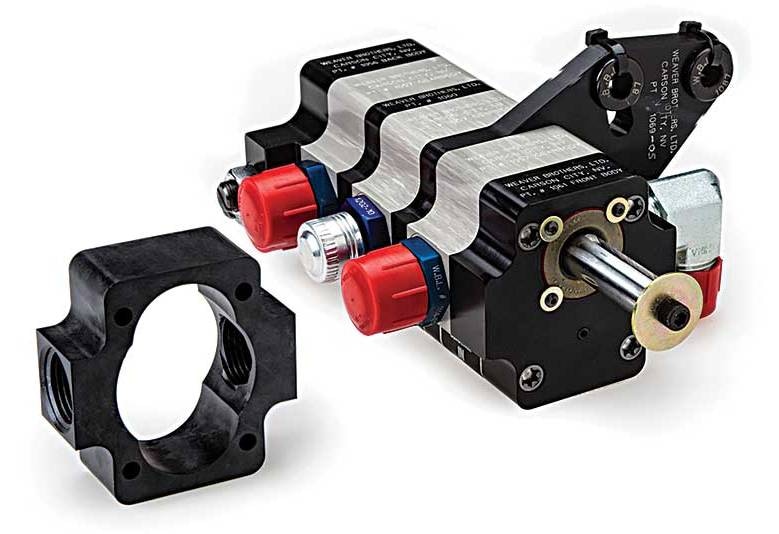Aug 8 2017
In manufacturing, the latest innovations in equipment, processes and materials often get tested first by automotive OEMs or Tier 1 suppliers. A good example of this is the Polimotor, an all-plastic engine that inventor Matti Holtzberg has worked on for nearly 40 years.
 The injection-molded black component (left forearm) replaces the three metal sections of the Polimotor 2 engine’s external dry sump modular oil pump housing. (Credit: Solvay Specialty Polymers)
The injection-molded black component (left forearm) replaces the three metal sections of the Polimotor 2 engine’s external dry sump modular oil pump housing. (Credit: Solvay Specialty Polymers)
The impetus behind the Polimotor is to demonstrate how plastic can be used in place of metal to reduce the weight of an engine, as well as interior, exterior and under-the-hood components. Holtzberg launched the Polimotor project in the late 1970s, and by 1984, convinced a racing car owner to equip the vehicle with the first version of the 2.3-liter engine for a series of International Motor Sports Association events. The engine was mounted in a Lola T616 aluminum chassis.
Although the engine performed admirably—including a third-place finish at Road America in 1985—the project was shelved for many years. About two years ago, Holtzberg rekindled the project with the help of engineers at his Florida-based company (Composite Castings LLC) and Solvay Specialty Polymers (a producer of materials such as polyphenylene sulfides and fluoroelastomers).
The first Polimotor weighed 168 pounds and was a direct, overhead cam, four-cylinder configuration that pumped out 290 hp at 8,500 rpm. Its main composite material was Torlon, a melt-processible thermoplastic that can be extruded into shapes and injection molded into custom geometries. Polimotor 2 will sport a turbocharger, improved fuel injection and produce 420 to 450 hp at 8,000 rpm. It will weigh about 143 pounds, which is some 88 pounds less than a standard production engine.
According to Holtzberg, nothing is architecturally different in the updated engine. What is new is that several components are now made of Solvay’s advanced specialty polymers. Three of them, in fact, are each being used for multiple
components.
KetaSphire PEEK (polyether ether ketone) is used for the engine’s oil scavenger line and fuel intake runner. Containing 30 percent glass fiber (CF30), the polymer has a chemical resistance similar to PPS (polyphenylene sulfide) but retains its excellent mechanical properties at continuous-use temperatures up to 464 F. KSP is a high-modulus, KT-820-grade polymer that offers excellent fatigue resistance, impact strength and ductility. The polymer comes in
natural-colored powders (coarse, fine, super-fine and ultra-fine).
Tecnoflon FKM is used for water outlet seals and fuel injector O-rings because it is compatible with a wide range of lubricants, fuels and additives. It withstands steam, aggressive-chemical and high-heat environments, and remains flexible in low temperatures.
Base-resistant grades work especially well in the presence of amine-based anti-corrosion additives. Ionic-curable grades are copolymers and terpolymers with a fluorine content ranging from 66 to 70 percent. Both types are available for all molding techniques.
The impeller and stator isolator in the engine’s water pump are injection molded of Ryton R-4 PPS. This 40-percent fiberglass-reinforced compound provides chemical resistance, low moisture absorption and dimensional stability at performance temperatures up to 428 F and temporary peak temperatures up to 509 F. Parts molded of this polymer also offer inherent thermal stability and flame resistance.
Other engine components made of Solvay polymers include cam sprockets and cover, a water outlet, the plenum chamber and oil pump housing.